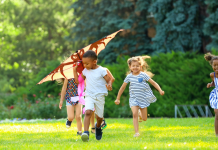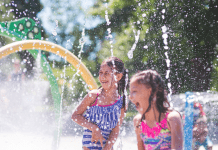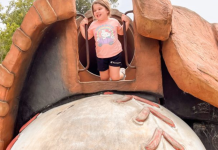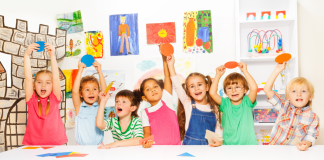A note from the author: this article is meant to be informative, not judgmental. Everyone maintains the right to choose how much or how little they share online. Only you can know what is right for your family. This deep dive into “sharenting” is meant to provide you with information, facts, links to other articles, and resources. Thank you for taking the time to read!
 Since the early 2000s, social media has become an increasingly large part of our daily lives. We snap photos of our vacations, pop on a subtle filter, and upload them to Instagram. We stay connected with long-distance friends and relatives through Facebook. We relax with some mindless scrolling through TikTok and Reddit. We send silly photos back and forth to friends through Snapchat. Rarely, people don’t have some connection to social media.
Since the early 2000s, social media has become an increasingly large part of our daily lives. We snap photos of our vacations, pop on a subtle filter, and upload them to Instagram. We stay connected with long-distance friends and relatives through Facebook. We relax with some mindless scrolling through TikTok and Reddit. We send silly photos back and forth to friends through Snapchat. Rarely, people don’t have some connection to social media.
Logically, we tend to become more active online after having children. How else would we quickly and easily share memories and milestones with friends and family? Yet, in the past few years, many people have wondered how much sharing is too much.
What is Sharenting?
“Sharenting,” a term created by Steven Leckart, is the phenomenon of parents oversharing when it comes to their children.
Our first glimpse into Sharenting comes from Mommy Bloggers: women who would publish posts about, well, life as a mom. In the late 90s and early 00s, Mommy Bloggers would log into Blogger or LiveJournal to share stories and snapshots of activities they came up with for their littles, family-favorite recipes, and their go-to products that make mom-ing a tad easier.
Then came Youtube. In the 2010s, we watched as parents pivoted to Family Vlogging where subscribers would get documentary-style content from families. Parents would upload carefully edited videos of everything from the first day of school to opening presents on Christmas morning. This new world of family-oriented social media uploads originated from a wholesome place: the desire to simply share.
The People Speaking Out Against Oversharing
Blake Miller, at The Fast Company, wrote a piece in 2014 entitled The Creepiest New Corner Of Instagram: Role-Playing With Stolen Baby Photos after it came to light that people were saving photos of stranger’s children online and re-uploading them onto their own Instagram accounts. They would then pretend that these stolen images of children were their own. Parents came to call it “digital kidnapping.”
Miller had spoken to a mother who found her infant’s photo on a fake adoption Instagram account and found herself being ignored or brushed off when she asked Instagram to take it down. Another Instagram Mom-fluencer shared that she felt violated after finding her photos on baby role-playing accounts. She decided she would no longer be posting her children’s faces on her account. These mothers are just two of many having their photos stolen on one of the most popular social media platforms.
Sarah Adams, the outspoken mom behind @mom.uncharted, spends most of her time sharing just how to keep your children safe online. Something she said in one of her TikTok videos resonated with me: “Children are unable to give informed consent. To all the people who are like ‘Oh, my kids like making these videos’ . . . Well yeah, they like attention from Mom and Dad. They like doing things with you. They like dancing, hearing funny songs, and seeing themselves on playback. That’s what they like. But they’re not consenting to you uploading it on a public social media platform to be seen by a potential billion people, not knowing who those individuals are.”
“MomTok” Content Creators Controversy
There are countless TikTok (and the like) content creators who utilize their children for views or to push sponsorships. It’s not hard to find them. To avoid calling out specific accounts, I will just say that these accounts showing typical toddler activities can actually amass millions of followers, with hundreds of thousands to millions of likes and comments. Often toddlers are shown modeling outfits that come with, you guessed it, affiliate links.
It can seem harmless at first, but when you scroll through the comments, you notice that many of the commenters are middle-aged men. People have left vulgar comments and even dueted (created a response video) these accounts with disturbing replies. One user on an account facing controversy recently took it as far as letting the mother know he enjoyed seeing the child’s bathtime videos.
Other MomTok (another term for the mommy influencer side of TikTok) creators and users have begun rallying to get specific content creators to notice the kind of attention their child is receiving online. Many times those creators simply disable comments in response.
This movement spurred many online news outlets to report on how far is too far when it comes to uploading videos of your children. Many often cite the 2021 report from the FBI which informs parents that upwards of 500,000 online predators are active daily.
 The Loss of an Authentic, Private Childhood
The Loss of an Authentic, Private Childhood
When we look both at influencers/family vloggers and our own social media presence, what we don’t always notice is the potential loss of an authentic and private childhood. For the children of influencers and content creators, there’s the concern that they have to always be ready to have a camera on them. How much of their life is truly theirs and how much is a show they know they have to put on? When everything is broadcast for hundreds of thousands, if not millions, of viewers — you can only feel a pang of sadness at the loss of authenticity and privacy for those children. Childhood is fleeting. We don’t want to have only seen it through our camera lens.
How Can We Keep Our Children Safe Online?
All of this begs the question: how do we keep our children safe online?
Right now, two bills have made it to the Senate that aim to protect children’s digital privacy. The first is the Children and Teens’ Online Privacy Protection Act (also known as COPPA 2.0). COPPA 2.0 would ensure that any individual under 18 (previously 13) years old, would be considered a child for legal purposes and would be offered current COPPA protections. The changes to COPPA also ensure that there will be a “data eraser button” for these children, which provides them more say in what is being saved or shown about them online.
The Hill interviewed Rachel Franz, the Family and Education Manager at Fairplay children’s advocacy group, in which she laments, “‘An issue with sharenting is that when we create these digital footprints for kids, it also leads them and families — they’re susceptible to targeted marketing,’ Franz explained. ‘And what COPPA 2.0 would do is ban that surveillance marketing to kids and would help them to stay safe from all the impacts of surveillance marketing.’”
Here is what YOU can do to keep your children safe online:
- Be aware of exactly what information you’re sharing and with whom.
- Be mindful of the digital footprint you’re creating for your child(ren).
- Ensure that your location is private in each social media site’s settings and understand how meta-data works with photo uploads.
For even more information on Sharenting and the creation of digital footprints for children, I recommend the following books:
- Sharenthood: Why We Should Think Before We Talk about Our Kids Online by Leah A. Plunkett
- Technology’s Child: Digital Media’s Role in the Ages and Stages of Growing Up by Katie Davis
- Growing Up Shared: How Parents Can Share Smarter on Social Media—and What You Can Do to Keep Your Family Safe in a No-Privacy World by Stacey Steinberg













